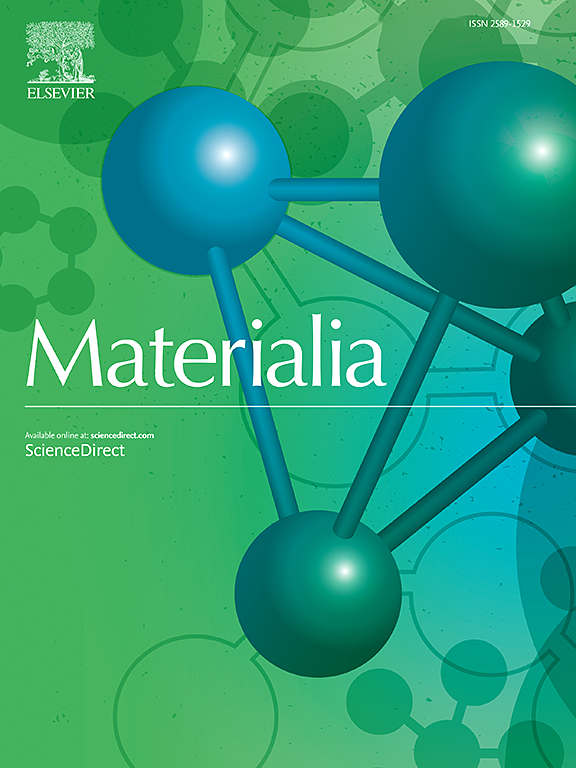An X-ray diffraction study of the influence of linear and changing strain paths on strain and texture evolution in AA6111-T4 aluminium alloy sheets
IF 3
Q2 MATERIALS SCIENCE, MULTIDISCIPLINARY
引用次数: 0
Abstract
Multi-stage automotive stamping processes involve both linear and changing strain paths. While extensive research exists on linear strain paths and discontinuous strain path change, the study of continuous strain path change is limited due to the need for sophisticated experimental procedures. In this paper, the effect of continuous strain path change on strain, strain hardening behaviour, microstructure, and texture evolution was compared with that of discontinuous strain path change in AA6111-T4 aluminium alloy using a novel experimental setup comprising an in-situ mechanical rig and cruciform sample. An X-ray source was used to obtain diffraction patterns, which were analysed to measure diffraction intensities and lattice strains at the {111}, {200}, {220} and {311} lattice planes to study strain hardening behaviour, microstructure, and texture evolution during the loading paths. The experiments were repeated outside the X-ray diffraction chamber to study macroscopic strain evolution and hardening behaviour of the samples using a digital image correlation system. It was found that the absence of unloading and reloading in the continuous strain path change posed challenges for plastic deformation in the next deformation stage, leading to strain softening, premature failure, and relatively weaker textural development. Conversely, the presence of unloading and reloading in the discontinuous strain path change facilitated increased plastic deformation in the next deformation stage, resulting in strain hardening, delayed failure, and stronger textural development.

求助全文
约1分钟内获得全文
求助全文
来源期刊

Materialia
MATERIALS SCIENCE, MULTIDISCIPLINARY-
CiteScore
6.40
自引率
2.90%
发文量
345
审稿时长
36 days
期刊介绍:
Materialia is a multidisciplinary journal of materials science and engineering that publishes original peer-reviewed research articles. Articles in Materialia advance the understanding of the relationship between processing, structure, property, and function of materials.
Materialia publishes full-length research articles, review articles, and letters (short communications). In addition to receiving direct submissions, Materialia also accepts transfers from Acta Materialia, Inc. partner journals. Materialia offers authors the choice to publish on an open access model (with author fee), or on a subscription model (with no author fee).
 求助内容:
求助内容: 应助结果提醒方式:
应助结果提醒方式:


